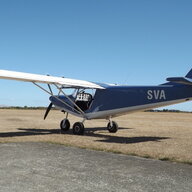Hi Glen, I can only speak from the experience of my own build:
1. The engine was much easier to fit to the ringmount supplied, by first removing the coolant pump cover with it's coolant outlets.
2. After fitting the engine to the mount, the pump cover was easily refitted, but the position of two of the coolant outlets had to be adjusted to allow the hoses to pass through the ringmount.
3. This was done by holding the cover gently in vice softjaws, gently heating the required outlet and rotating it by pushing on a piece of dowel inserted in the outlet.
I made these adjustments several times before getting them right, and was concerned that I may have leakage as a result, but there has been no problem. The pump outlets are a soft alloy with a fine thread secured with Loctite 243, which requires a moderate amount of heat.
(The coolant inlets at the cylinder heads are a similar fitting with the same fine thread, but a higher temperature Loctite is used there, requiring considerable heat for removal. I have replaced one cylinder head port, it was a difficult job which took me three attempts to achieve a leak-proof installation.)



